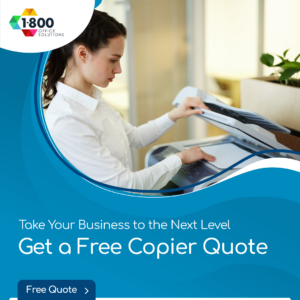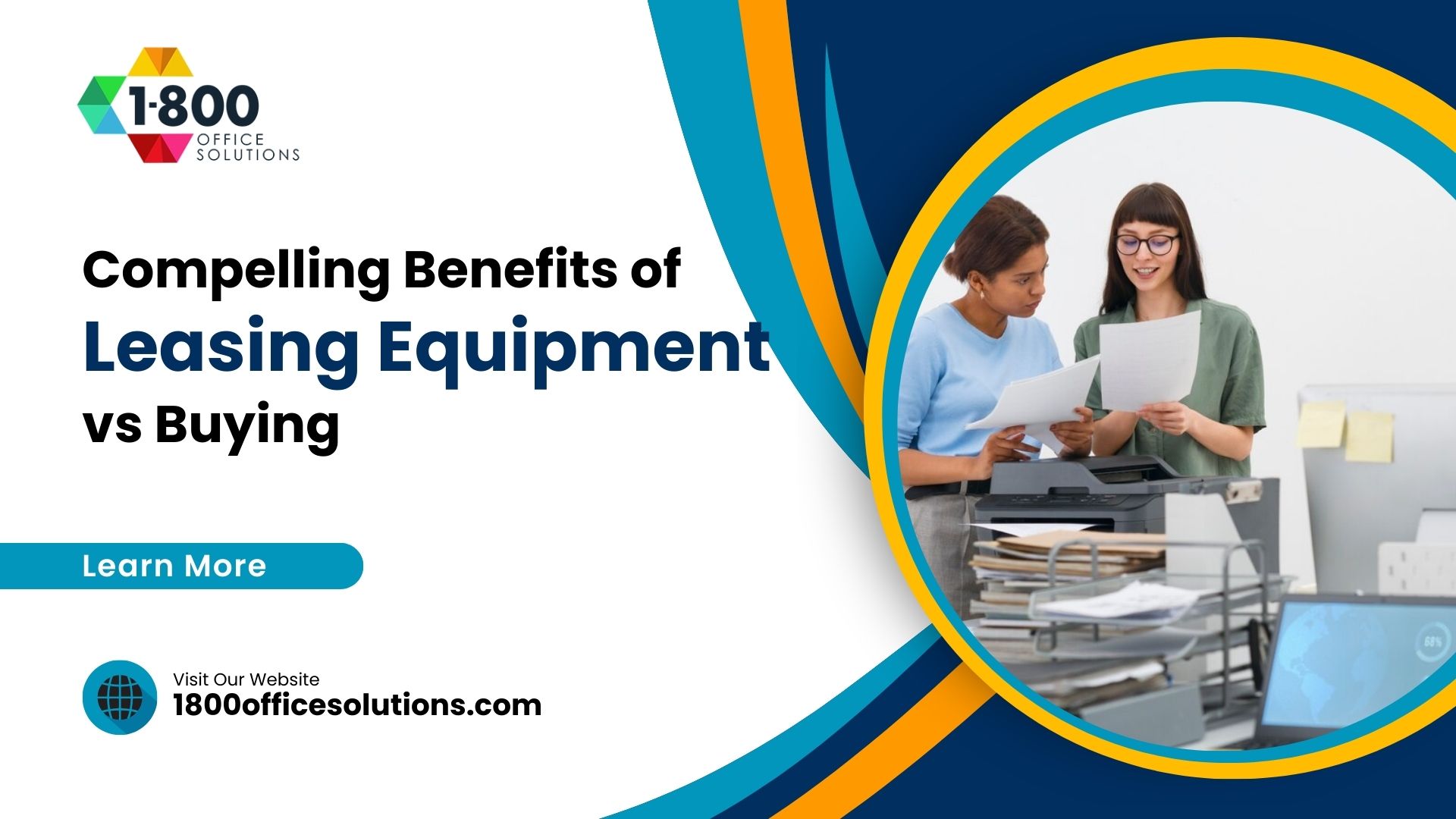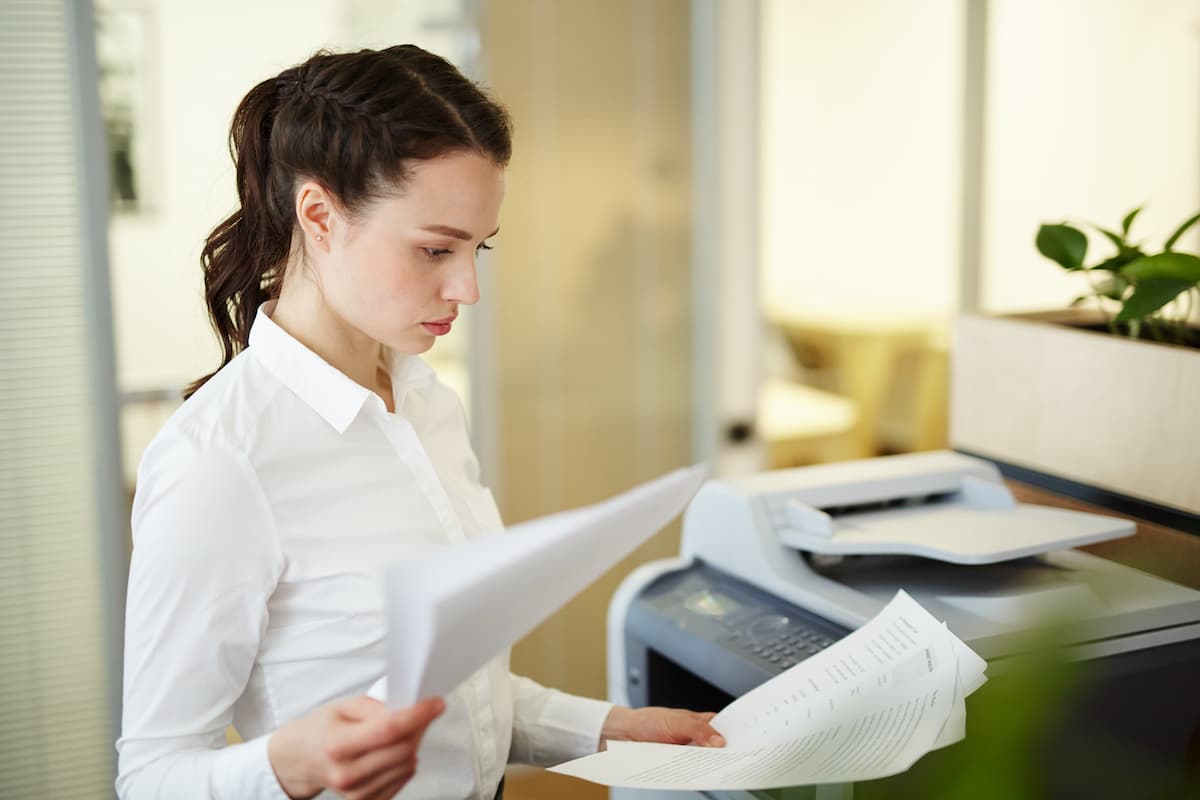Why Successful Companies are Turning to Copier Leasing – And You Should Too!
Definition of Copier Leasing
Copier leasing refers to an agreement where a business obtains a copier by paying fixed monthly installments instead of purchasing it outright. This arrangement allows companies to use the latest copiers without the financial burden of buying them. Leasing often includes maintenance and support, making it a hassle-free option for many businesses.
Importance in Modern Business
In the fast-paced world of modern business, having access to the latest technology is crucial. Copier leasing plays a vital role in ensuring that companies can keep up with technological advancements without heavy investments. By leasing an office copier, businesses can maintain a competitive edge, enhance efficiency, and adapt to changing needs. Understanding the Leasing Process can provide further insights into how this model fits into today’s business landscape.
Why Companies are Turning to Copier Leasing
Financial Flexibility
Financial Flexibility: Leasing a copier provides financial flexibility as it doesn’t require a large upfront investment. Businesses can preserve their capital and allocate funds to other essential areas. Monthly payments are predictable, making budgeting easier. This flexibility is particularly beneficial for small and medium-sized enterprises (SMEs) that need to manage their cash flow carefully.
Access to Latest Technology
Access to Latest Technology: Copier leasing ensures that companies always have access to the latest technology. When a lease term ends, businesses can upgrade to newer models, staying ahead of technological advancements. This continuous access to cutting-edge technology enhances productivity and ensures compatibility with evolving business needs. Explore Various Copier Types to understand the range of options available.
Maintenance and Support
Maintenance and Support: Leasing often includes regular maintenance and support from the provider. This means that if a copier or printer faces any issues, professional support is readily available. It eliminates the need to hire specialized technicians, saving both time and money. Regular maintenance also ensures that the equipment, whether it’s a Xerox or other brands, remains in optimal condition, reducing downtime.
Pros and Cons of Leasing vs. Buying
Pros of Leasing
- No Large Upfront Cost: Unlike buying a copier, leasing doesn’t require a significant initial investment. It allows businesses to acquire high-quality equipment without straining their budget.
- Flexible Terms: Lease agreements often come with flexible terms, allowing businesses to choose the duration and conditions that suit their needs.
- Inclusive of Maintenance: Leasing usually includes maintenance and support, ensuring that the equipment, including toner replacement, is always in perfect working condition.
Cons of Leasing
- Total Cost May Be Higher: Over the long term, the total cost of leasing may exceed the price of buying a copier outright.
- Contractual Obligations: Lease agreements come with contractual obligations that may limit flexibility, especially if a business wants to switch or upgrade equipment before the lease term ends.
Pros of Buying
- Ownership: Buying a copier means owning the equipment. It’s a one-time investment that eliminates monthly payments.
- No Contractual Limitations: Ownership provides complete control over the equipment without any contractual limitations or restrictions.
Cons of Buying
- High Initial Cost: The upfront cost of buying a copier can be substantial, especially for high-end models.
- Responsibility for Maintenance: Owning a copier means taking on the responsibility for maintenance and repairs, which can be costly and time-consuming.
Both leasing and buying have their unique advantages and disadvantages. The choice between leasing a copier and buying one depends on various factors such as financial capacity, need for the latest technology, and preference for maintenance support.
By carefully considering these aspects, businesses can make an informed decision that aligns with their goals and operational requirements. Whether it’s a lease, a purchase, or a combination of both, the right approach can significantly impact a company’s efficiency and success.
Understanding the Leasing Process
How to Choose a Leasing Company
Selecting the right leasing company is crucial for a successful copier lease. Businesses should consider factors such as the company’s reputation, customer service, available copiers and printers, and the flexibility of lease terms and conditions. Researching online reviews and seeking recommendations can help in finding the best copier leasing company that aligns with the business needs.
Negotiating Terms
Negotiating the lease terms is an essential part of the process. It includes discussing the length of the lease, monthly rate, service agreement, and other conditions. Understanding your needs and being clear about your requirements can lead to a more cost-effective and hassle-free agreement.
Understanding Contracts
A lease agreement is a legally binding document that outlines the terms and conditions of the lease. It includes details such as the term of the lease, end of the lease obligations, maintenance contract, and more. Understanding the Leasing Process and carefully reading the contract ensures that there are no surprises at the end of your lease.
Financial Analysis: Leasing vs. Buying
Long-term Costs
Analyzing the long-term costs of leasing vs buying a copier is vital. While leasing may offer lower upfront costs, the total cost of the copier over the length of the lease might be higher. Conversely, purchasing a copier requires a higher initial investment but may be more economical in the long run.
Tax Incentives
Leasing often provides tax incentives, allowing businesses to deduct the monthly payment as a business expense. This can make leasing a more attractive option for many companies, especially small and medium-sized businesses.
Impact on Cash Flow
Leasing a copier provides a predictable monthly rate, enabling better cash flow management. Unlike paying cash for purchasing one outright, leasing allows businesses to preserve capital and allocate resources to other essential areas.
How to Switch Your Copier or Printer Provider
Reasons to Consider Switching
Switching a copier or printer provider may be necessary for various reasons. If the current equipment doesn’t meet the printing needs of the business, such as the required pages per minute or color printing, a change might be in order. Additionally, issues with the service contract, such as delayed maintenance or unmet service expectations, can prompt a switch.
Businesses may also find a more cost-effective solution with better features or favorable lease terms and conditions. Evaluating the performance of the current copier, understanding the office’s specific needs, and comparing the cost of the equipment with the benefits provided are essential steps in deciding whether switching is the right move.
How to Make the Switch
Making the switch to a new copier or printer provider involves several key steps. First, businesses must identify their needs and find the best copier or printer that matches those needs. This may include considerations such as multifunction capabilities, printers and copiers integration, or specific brand preferences like Xerox VersaLink or Konica Minolta.
Next, negotiating new lease contracts is crucial. This involves understanding the length of the lease, monthly rate, and other terms that align with the business’s goals. Communicating with both the old and new providers ensures a smooth transition. Coordination may include scheduling the removal of the old equipment and the delivery of the new one to the correct delivery address.
Finally, businesses should consider the timing of the switch. If the current lease is not at the end of the lease, there may be penalties or other considerations. Working closely with the new provider to get a new copier at the right time can prevent unnecessary costs or disruptions.
Understanding New Terms and Services
Understanding the new lease terms and conditions, service plan, and other services is essential when switching providers. This includes details such as the term of the lease, end of the lease obligations, maintenance contract, and more. Businesses should also inquire about additional services such as managed print services, service agreement details, and support for specific features like document management or managed print.
It’s essential to clarify any ambiguous terms and ensure alignment with business goals to avoid potential misunderstandings or conflicts later. For example, understanding what happens at the end of your lease, knowing the cost of the copier over the length of the lease, and being clear about the service contract can prevent surprises and ensure a successful relationship with the new provider.
Switching a copier or printer provider is a significant decision that requires careful planning, negotiation, and understanding of both the old and new agreements. By considering the reasons for switching, following a structured process to make the switch, and fully understanding the new terms and services, businesses can ensure a smooth transition that aligns with their needs and contributes to their success.
Whether it’s to stay ahead with the latest technology, find a more cost-effective solution, or address specific challenges with the current provider, switching can be a strategic move that enhances efficiency and productivity.
Types of Copiers and Features
Different Types of Copiers
There are various types of copiers, including multifunction copiers, monochrome, and color copiers. Choosing the right copier depends on factors such as required pages per minute, color printing, and other specific needs.
Advanced Features
Modern copiers offer advanced features such as document management, wireless printing, and integration with cloud services. These features enhance functionality and provide a comprehensive solution for office needs.
Matching Needs to Functionality
Matching the needs of the office with the functionality of the copier ensures efficiency and productivity. Whether it’s a Xerox VersaLink or a Konica Minolta Bizhub, understanding the features and aligning them with the office’s requirements is key to choosing the right equipment.
Case Studies and Real-world Examples
Success Stories
Many businesses have found success by leasing copiers rather than buying them. From small and medium-sized businesses to large corporations, leasing has provided a flexible and cost-effective solution. Success stories often highlight the ability to stay ahead with the latest technology and enjoy hassle-free maintenance.
Pitfalls to Avoid
Common pitfalls include entering into longer lease agreements without understanding the terms, failing to negotiate the best deal, or choosing the wrong copier for the business needs. Being aware of these pitfalls can help businesses get the best copiers and avoid unnecessary complications.
What People Also Ask
What are the benefits of leasing over buying?
Leasing offers benefits such as lower upfront costs, access to the latest technology, flexibility in changing equipment, and often includes maintenance and support. It can be a more cost-effective solution for businesses that need to regularly update their copiers and printers.
How can I switch my copier provider if I'm under contract?
Switching providers while under contract may require careful negotiation and understanding of the existing lease agreement. It's essential to review the terms and work with legal or professional assistance to ensure a smooth transition without legal complications.
What should I look for in a copier leasing company?
Look for a reputable company with a wide range of options, transparent pricing, flexible lease terms, and excellent customer service. Consider the company's experience, reviews, and the support they provide throughout the lease term.
Conclusion
In the world of office equipment, the decision to buy or lease copiers and printers is significant. Understanding the various factors such as long-term costs, tax incentives, types of copiers, and the leasing process is essential in making an informed decision. Whether you’re a small business or a large corporation, we’ll provide insights into how leasing can be a viable and often more cost-effective option.
The choice between leasing and purchasing a copier or printer should align with the business’s financial situation, technological needs, and operational requirements. From Xerox AltaLink to Canon ImageRunner, the market offers a wide range of options to suit every model of business.
Consider leasing as a flexible, cost-effective way to meet your printing and scanning needs. Explore options, negotiate terms, and find the best copier that aligns with your goals. The right decision can lead to increased efficiency, productivity, and success in your business endeavors. Get a new copier today and embrace the benefits of modern office technology.












